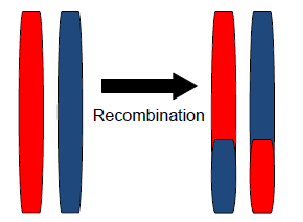Sure. I'll explain what I mean by that. What I want to start with is what the word "diploid" means, which is literally "Two sets of chromosomes". So yeah, it stands to reason that you should never hear of a diploid with a missing set of chromosomes, because it would not by definition be one.
Ok, so a quick genetics lesson. Plants (Especially peppers) are extremely good at having sex with themselves. The flowers contain what would be equivalents of both sperm (pollen) and the stigma of the plant, which can be thought of as the equivalent of eggs. Each of these things contains a single set of chromosomes. The plant becomes pregnant when some of the pollen gets in contact with the stigma, and then a fruit is grown which contains the babies. It is the plant's hope that many different locations will adopt the babies, and so evolution has helped make the fruit attractive to various animals.
Anywaysssss..
Cross-pollination is when you interrupt the plant's furious masturbation session and introduce pollen from another species of plant. The baby will have a set of chromosomes from each parent plant. However, that new plant is only the true offspring of one of those parents, and it's pollen will be missing one set of those chromosomes. If it does start to flower, and you do not cross-pollinate again with a one of the first breeds, that plant's babies can have one of several different kinds of trouble, as typically half of any generation of plants will lack the dominant genes from the parents. The chance of successful passing of the desired dominant genes means approximately 3 out of 4 plants grown from saved seeds will be weak, or sterile.
An F2 diploid would be the successful pollination of a hybrid plant to either one of the original parent plants, or a new set of chromosomes introduced from another species. The longer you keep various types of plants in proximity to each other, the more likely that you will pick up the genes from a different species. Those new plants may not contain the desired genes you hope for, that's why farmers tend to destroy the offspring of this year's crops after harvest, and why so many home gardeners have mutant plants.


